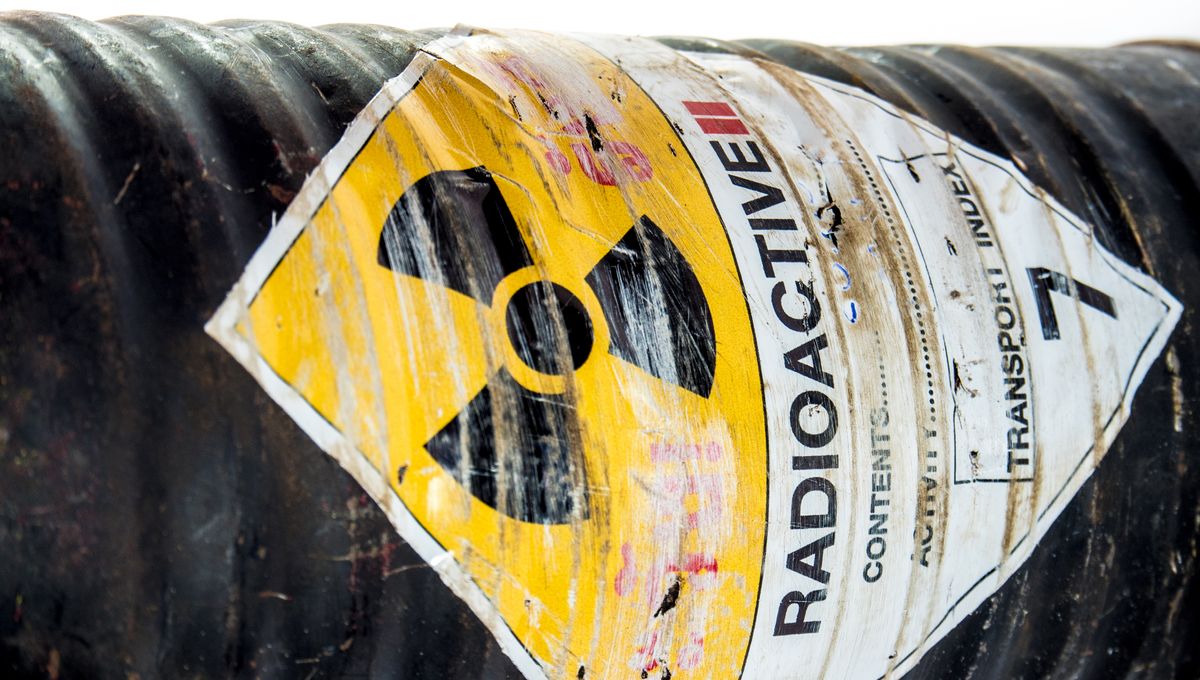
Researchers have developed a battery that effectively runs on nuclear waste, an idea reminiscent of Godzilla, the colossal monster that thrives on radiation.
ADVERTISEMENT
Nuclear energy is a contentious topic. On the one hand, it accounts for about 20 percent of the US’s electricity production and contributes very little to the country’s carbon emissions. On the other, radioactive waste is a significant problem, as it is not only dangerous to humans, animals, and the environment, but is also difficult to dispose of. This means it can remain a threat for thousands of years until it decays to safe levels (but even then, some components can remain dangerously radioactive for tens of thousands of years).
But what if that nuclear waste was itself a source of energy? Well, researchers at Ohio State University have created a battery, just 4 cubic centimeters (0.24 cubic inches) big, that can convert nuclear energy into electricity via light emission. Although they run off radioactive sources, the batteries themselves do not contain any radioactive materials, so they are also safe to touch.
The researchers have shown that ambient gamma radiation (harmful ionizing radiation) could be harvested from nuclear waste using a combination of scintillator crystals (which emit light when they absorb ionizing radiation) and solar cells. The team believes this process could produce enough electricity to power microelectronics, like microchips.
“We’re harvesting something considered as waste and by nature, trying to turn it into treasure,” Raymond Cao, professor in mechanical and aerospace engineering at Ohio State and the director of Ohio State’s Nuclear Reactor Lab, said in a statement.
They tested a prototype of the battery using two different radioactive sources: cesium-137 and cobalt-60, some of the most common byproducts of nuclear fission.
When testing it on cesium-137, the team found that the battery produced 288 nanowatts. For context, a nanowatt is one-billionth of a watt, and you need one of those just to have a television on standby. However, it was a different picture when cobalt-60 was used; then, the battery produced 1.5 microwatts (microwatts are one-millionth of a watt) of power. This was around the amount needed to turn on a small sensor.
ADVERTISEMENT
Interestingly, Cao and his colleagues believe their prototype battery may have experienced an increase in power due to the makeup of the prototype scintillator crystal they used, with its shape and size influencing the final electrical output. Crystals with larger volume can absorb more radiation and convert that into more light.
“These are breakthrough results in terms of power output,” said Ibrahim Oksuz, co-author of the study and a research associate in mechanical and aerospace engineering at Ohio State. “This two-step process is still in its preliminary stages, but the next step involves generating greater watts with scale-up constructs.”
It is certainly not enough to power something like a home – that requires kilowatts – but with the right power source, these devices could be scaled up to target applications at least at or above the watts level. This means the batteries would not be targeted for public use. Instead, the goal is that they will be used where nuclear waste is produced, such as in nuclear waste storage pools or nuclear systems for space and deep-sea exploration.
As these batteries will only likely be used in environments with high levels of radiation, they could be used for long durations without polluting their surroundings and without routine maintenance.
ADVERTISEMENT
However, it would be quite expensive to scale these technologies up unless they can be reliably manufactured. Before then, further research is needed to assess the batteries’ utility and limitations, especially the length of time they can operate once installed.
Nonetheless, Oksuz said that the concept is still “very promising.”
“There’s still lots of room for improvement, but I believe in the future, this approach will carve an important space for itself in both the energy production and sensors industry.”
The study is published in Optical Materials: X.
Source Link: New Godzilla-Like Battery Runs On Radioactive Waste